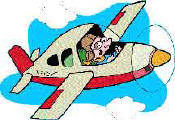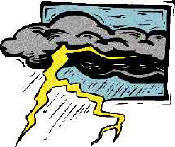Mountain IFR
Of Virgil and ARTCC
Some pilots cling to the past regarding new aircraft equipment with suspicion until it meets “their” approval, not some, in their opinion, asinine PMA, TSO, or STC; reserving their judgment until after they ferret out the pros and cons. These pilots view many of these items as expensive gadgets, another way of gouging money from an airman. Virgil was such a man.
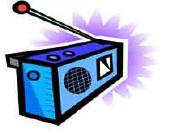 When
LORAN came out, Virgil investigated and liked everything he read
except the precipitation static problem. He was told the radio would
up and quit with no warning when flying in rain or snow, but overall
he liked its characteristics. And since he often flew into the Idaho
Primitive Area and other out-of-the-way airstrips during good
weather, he thought this would solve his navigation problems.
When
LORAN came out, Virgil investigated and liked everything he read
except the precipitation static problem. He was told the radio would
up and quit with no warning when flying in rain or snow, but overall
he liked its characteristics. And since he often flew into the Idaho
Primitive Area and other out-of-the-way airstrips during good
weather, he thought this would solve his navigation problems.
On a day when other pilots preferred to remain grounded, Virgil as obstinate and bull-headed as ever, decided it was time to brave the weather and depart from Johnson Creek, an airstrip south of the South Fork of the Salmon River in western Idaho. He often came here to relax and do a little fishing. He preferred the quiet life of camping, fishing and hunting to the rush and turmoil of city life.
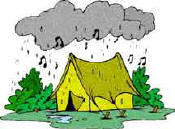 This
miserable weather was nothing like the forecast, an occasional
afternoon or evening shower. Yesterday had been spent inside reading
while torrents of wind-lashed rain poured from black clouds,
effectively making him a prisoner of his tent.
This
miserable weather was nothing like the forecast, an occasional
afternoon or evening shower. Yesterday had been spent inside reading
while torrents of wind-lashed rain poured from black clouds,
effectively making him a prisoner of his tent.
The prolonged rains had the potential to turn the grass strip into a quagmire from which he couldn't escape for several days after the sun returned. No, the time had come for him to move on.
While he waited for a hole in sky, he conducted a meticulous preflight of his Cessna 180. Then he stood around the campfire swapping stories with other pilots waiting for a break in the weather. In this isolated section of the country, there are no telephones and no line-of-sight communication by airplane radio. A pilot departs at his own risk.
“You know, Jerry,” Virgil began, “if this out-in-the-boondocks airport had a telephone, I could get a void time clearance and not have to wait around to get out of here.”
“Yeah, but if it had a telephone you wouldn't be coming here.”
“You're right about that. And besides, there's no SID to help avoid obstacles during the climb out to MEA. By the way, did you know obstacle clearance is based on your aircraft being able to climb at 200 feet per nautical mile, crossing the end of the runway at 35 feet AGL, and climbing to 400 feet above airport elevation before turning.”
“No, I can't say that I did. Where did you get all this information?”
“I picked up a copy of “TERPS, Terminal Instrument Procedures Manual, “and have been glancing through it. It makes flying IFR a little scary. If there are obstacles around an airport they figure the slope for these obstacles at 152 feet per nautical mile. That only gives you 48 feet of obstacle clearance per mile at minimum performance. When they get into a situation where obstacles penetrate this slope, they make up elaborate departure maneuvers like those at Missoula, Montana, that require a greater-than-normal climb gradient, like Jackson, Wyoming, or they publish a ceiling and visibility minimum so you can see and avoid the hurdles before entering the clouds.”
At last, the clouds opened a little. Virgil was able to see the top of Golden Gate Hill about three miles north of the airstrip. The other higher mountains were still obscured by clouds, but Virgil thought the “sucker hole” was large enough to climb up and get a clearance from center. If the clouds started to close in, he would let down and land.
“Well, Jerry, this looks like my chance. See you later.”
“Yeah, you take care. And, keep the shiny side up.”
Virgil departed. Pop-up IFR was no problem. The Salt Lake Center controllers accommodate pilots, knowing they are unable to file a flight plan or communicate in any other manner from the ground. So Virgil headed east, direct to Jackson, Wyoming.Of all the things Virgil did with his life, nothing pleased or satisfied him more than flying. Flying at 15,000 feet, enveloped in clouds, his attention wandered between thoughts of maintaining aircraft control and calling Idaho Falls Radio for a weather briefing.
“Idaho Falls Radio, Cessna N7039W, on 122.6.”
“Cessna 39W, Idaho Falls.”
“Good morning, 39W is IFR, Big Creek to Jackson. Do you have time for a weather briefing?”
“39W, do you have the latest advisory for eastern Idaho?”
“That's negative, I've been camping for the last three days.”
“Roger, a cold front has stalled in the eastern part of Wyoming and is producing some backlash from about Challis to the Jackson area. We have pilot reports of turbulence and icing . . .”
Despite the weather Virgil continued his flight, rationalizing to himself the Idaho Falls airport provided a good alternate. For a while everything went well. Then he began getting into the forecast turbulence. It started as an occasional nibble, pushing here and shoving there; building to a crescendo requiring all his attention to maintain his assigned altitude.
Next, it began raining. Thoughts of icing occupied his mind, but he made excuses to himself to allow him to continue in good conscious. His experience was that stratus-type clouds seldom exceeded 3,000 feet in thickness and even when layers merged, 6,000 feet was about the limit of their vertical extent. Even with his normally aspirated 180 he figured he could climb another 2,000 feet without much of a struggle already being 1,000 feet above MEA and escape any ice he might encounter.Such weather conditions always caused his imagination to begin running wild. His gray matter demanded to know where all this turbulence was coming from. A cumulus cloud produces this kind of turbulence, not the stable layers of stratus.
Before having time to formulate an answer the LORAN dropped off line. He quickly switched to the VORs but they failed to respond. Knowing the rain was affecting the LORAN and thinking ice on the antennas might be the culprit acting on the VORs, he continued by flying his last heading. Being well schooled in IFR procedures, Virgil knew he should confess his predicament to center; he continued on instead, as set in his ways as ever. He hadn't gotten this far in life by relying on others. Uncompromisingly, he thought “I got myself into this and by gosh, I'll get me out.”
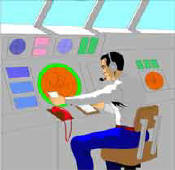 “N7039W,
Salt Lake, say altitude.”
“N7039W,
Salt Lake, say altitude.”
"I'm at . . . uh . . . err, I'm climbing to 14 thousand.” Oh, my gosh, thought Virgil. How did I get down to 13,000 feet?
“I'm showing you six miles north of course, turn right 20 degrees, direct Jackson when able. And, give me a call at 801-524-5190, when you get on the ground.”
After tying down, Virgil found his long-time friend and flight instructor, Tom. He confessed his transgressions and asked what he should do.
“The first thing you do is call Salt Lake Center. Tell them the problems you encountered, without making excuses. And be polite. Then, come see me.��
Virgil was looking dejected when he entered Tom's office. “The guy just yelled at me, said if I couldn't fly any better than that, I shouldn't be flying.”
“They're under a lot of pressure. Sometimes they put on a big show to impress upon you the seriousness of your situation. Other times they really are mad. I think you better fill out a NASA Safety Report.”
“Oh, what's that?”
“It's a piece of paper you mail to California, but that's not important now...”
Virgil was still perplexed and didn't appreciate Tom's attempt at the “Airplane”-movie humor. Tom broke the momentary tension and explained the FAA established a voluntary safety program administered by NASA, an independent third party designed to obtain information about deficiencies in the aviation system. Its purpose is to enhance safety by eliminating conditions that can lead to an accident.
“To ensure timely receipt of this information, you will receive a waiver of certain disciplinary actions against you, if your report is postmarked within 10 days of the incident.”
“You mean to say, if I fill out one of these reports, they can't take my license away?”
“Well, there are certain restrictions. For example, if you're carrying drugs, the report won't help you. But, for honest mistakes, you can use the date-stamped receipt you get back to squelch a certificate action or fine. You would use this only if you receive notice from the FAA that you are being investigated. Once you use it, you’ll have to wait for three years before using it again.”
Virgil's lips opened into a smile, the enthusiasm returning. Grateful for Tom's advice, he shuffled out to his car.
|
|
|


